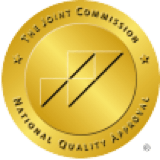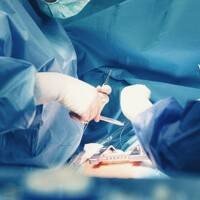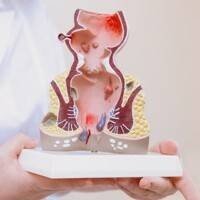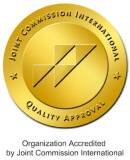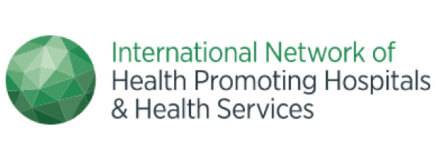Hemorrhoids are swollen and twisted veins in the lower rectum and anus. They may be internal or external. Hemorrhoids may be caused by factors such as straining during bowel movements, prolonged sitting, chronic diarrhea or constipation, being overweight or obese, pregnancy, or adopting a diet that lacks fiber.
What are hemorrhoids?
Hemorrhoids refer to prolapse of anal cushion at the end of the rectum or around the anus, causing the blood vessels to swell and become engorged, forming soft venous masses. This is a common anal condition.
Types of Hemorrhoids
Based on the location and characteristics of hemorrhoids, they can be divided into the following three types:
Internal Hemorrhoids: Hemorrhoids located above the dentate line are called internal hemorrhoids. Since this area lacks pain receptors, internal hemorrhoids are usually painless but may cause bright red bleeding during bowel movements.
External Hemorrhoids: Hemorrhoids occurring below the dentate line, covered by anal skin, are called external hemorrhoids. External hemorrhoids may cause discomfort such as pain, itching, or swelling around the anus.
Mixed Hemorrhoids: The condition where both internal and external hemorrhoids coexist is called mixed hemorrhoids. This type of hemorrhoid spans the dentate line, with internal and external hemorrhoids connected, forming a single entity。
Internal Hemorrhoids vs. External Hemorrhoids: What's the Difference?
Internal hemorrhoids are located inside the anus and typically do not cause pain but may lead to painless bleeding. External hemorrhoids are located outside the anus and are often accompanied by pain and discomfort, especially during bowel movements.
Causes of Hemorrhoids
The formation of hemorrhoids is related to multiple factors, primarily involving increased abdominal pressure and impaired venous blood return around the anus. The following are common risk factors:
- Chronic Constipation or Diarrhea
During constipation, excessive straining during bowel movements increases pressure on the anal veins, which can lead to hemorrhoid formation over time. Conversely, chronic diarrhea frequently irritates the anal area, contributing to the development or worsening of hemorrhoids. - Prolonged Toilet Time
Many people spend extended periods on the toilet or use their phones, causing prolonged pressure on the veins around the anus, impairing blood circulation, and increasing the risk of hemorrhoids. - Prolonged Sitting or Standing
Maintaining the same posture for extended periods (e.g., office workers, drivers, and teachers) can impair blood return around the anus, increase venous pressure, and contribute to hemorrhoid formation. - Pregnancy and Childbirth
In pregnant women, the enlarging uterus increases abdominal pressure, making it difficult for blood to return from the anal veins. Additionally, the straining during childbirth can further exacerbate anal vein dilation, worsening hemorrhoids. - Obesity
Excess body weight increases abdominal pressure, impairs blood circulation, and hinders venous return in the anal area, contributing to the formation of hemorrhoids. - Lack of Exercise
Insufficient physical activity can reduce intestinal motility, increasing the risk of constipation and subsequent difficulty with bowel movements, making hemorrhoids more likely to occur. - Unbalanced Diet
A lack of dietary fiber (such as vegetables, fruits, and whole grains) can lead to constipation, while excessive consumption of spicy foods, alcohol, coffee, and other irritants may stimulate the gastrointestinal tract and anal mucosa, increasing the risk of hemorrhoids. - Aging factors
As people age, the tissues around the anus gradually degenerate, reducing the support for the anal veins. This makes the veins more prone to dilation, leading to an increased incidence of hemorrhoids.
Symptoms of Hemorrhoids
Symptoms usually occur when the hemorrhoids become enlarged or inflamed, and can include:
- Bleeding during bowel movements (bright red blood without pain)
- Itching or irritation in the anal area
- Pain or discomfort
- Swelling around the anus
- Appearance of sensitive or painful lumps
- Black or tarry stools
- Bloody stools
Diagnosis of Hemorrhoids
The diagnosis of hemorrhoids is typically based on medical history and clinical examination. The doctor will conduct an initial assessment based on the patient’s symptoms, bowel habits, and pain levels, followed by detailed diagnosis using the following methods:
- Visual and Digital Examination
Visual and digital examination is one of the basic methods for diagnosing hemorrhoids, primarily through observation and palpation to assess the condition. For external hemorrhoids, doctors can directly observe swelling or thrombosed hemorrhoids around the anus. Internal hemorrhoids, however, are typically hidden inside the rectum, but if prolapse occurs, doctors may detect a mass during visual inspection. Additionally, doctors perform a digital rectal examination (using a gloved, lubricated finger) to assess whether there are any masses or abnormalities inside the rectum. This method is simple and quick, helping doctors initially determine the type and severity of hemorrhoids. - Anoscopy
Anoscopy is a common method for diagnosing internal hemorrhoids. The doctor uses an anoscope (a short, tubular instrument) to directly visualize and assess the size, number, and severity of internal hemorrhoids. This procedure is simple, quick, and typically does not require anesthesia, making it suitable for most patients. Through anoscopy, doctors can more accurately evaluate the condition and develop an appropriate treatment plan based on the findings. - Sigmoidoscopy or Colonoscopy
Sigmoidoscopy or colonoscopy is an in-depth diagnostic method used to investigate potential intestinal issues in patients with hemorrhoids. When patients experience recurrent bleeding, black stools, or changes in bowel habits, doctors may recommend further examination to rule out conditions such as colon polyps, inflammatory bowel disease, or colorectal cancer.
A sigmoidoscopy examines the rectum and sigmoid colon and is suitable for patients suspected of having internal hemorrhoids or other rectal issues. On the other hand, a colonoscopy is used when other intestinal abnormalities (such as tumors or inflammation) are suspected, particularly for individuals aged 50 and above or those with a family history of such conditions.
These diagnostic procedures provide comprehensive information, helping doctors identify the underlying cause and develop an appropriate treatment plan.
Treatment Methods
Some hemorrhoids may improve gradually with lifestyle changes, while others require medical treatment. Depending on the patient's condition, a doctor may recommend the following treatment options:
-
Dietary and Lifestyle Modifications
Improving diet and lifestyle habits is the first step in alleviating hemorrhoid symptoms. Increasing dietary fiber intake—such as consuming more fruits, vegetables, and whole grains—helps soften stools and reduces straining during bowel movements, thereby lowering the risk of hemorrhoids. Additionally, maintaining adequate hydration helps prevent constipation. Avoiding prolonged sitting and engaging in moderate exercise can promote bowel motility and reduce the likelihood of hemorrhoids.
If necessary, doctors may also prescribe medications, including topical treatments such as suppositories or ointments, to relieve symptoms. -
Minimally Invasive Treatments
When conservative treatments fail or hemorrhoid symptoms become severe, minimally invasive procedures may be appropriate. These methods are typically performed on an outpatient basis, involve shorter recovery times, and carry lower risks. Common minimally invasive treatments include:- Rubber Band Ligation: A small rubber band is placed around the base of the hemorrhoid to cut off blood supply, causing it to shrink and fall off. This method is effective for internal hemorrhoids, particularly Grade II and III cases.
- Sclerotherapy: A sclerosing agent is injected into the hemorrhoid, causing it to harden and shrink. This approach is suitable for Grade I and II internal hemorrhoids, especially in patients with bleeding symptoms.
- Stapled Hemorrhoidopexy (PPH): Also known as stapled hemorrhoidectomy, this procedure uses a specialized circular stapler to remove and reposition prolapsed hemorrhoidal tissue, reducing discomfort.
- Traditional Hemorrhoidectomy: Recommended for severe internal or external hemorrhoids, this surgery is performed under general or spinal anesthesia. The surgeon excises the hemorrhoidal tissue using electrocautery or a scalpel, and the wound may be left open or sutured for natural healing. This method is more invasive, involves greater postoperative pain, and requires a longer recovery period. The procedure typically takes 30 to 45 minutes.
If you are suffering from hemorrhoids or other colorectal/anal conditions, you may consult the Colorectal & Anal Surgery Department (Hemorrhoid Clinic) at Hong Kong Adventist Hospital for further evaluation and to schedule your first appointment.
How to Manage Pain After Hemorrhoid Surgery?
After hemorrhoid surgery, patients may experience varying degrees of pain and discomfort, particularly during bowel movements. Below are some effective pain management strategies to help patients recover more comfortably.
- Oral Pain Medication
To effectively relieve pain, doctors typically recommend oral analgesics such as NSAIDs (non-steroidal anti-inflammatory drugs) or paracetamol (acetaminophen). Additionally, topical anesthetic creams or gels (e.g., lidocaine ointment) can provide temporary relief from burning and discomfort in the anal area. - Warm Sitz Baths
Sitz baths are a crucial part of postoperative care. It is recommended to soak the affected area in warm water (37-40°C) for 10-15 minutes, 2-3 times daily, especially after bowel movements. This helps reduce swelling, improve blood circulation, and promote wound healing. If needed, a mild antiseptic solution or aloe vera can be added to the water for additional soothing effects. - Dietary Adjustments to Prevent Constipation
Increase high-fiber foods (vegetables, fruits, whole grains) to keep stools soft and reduce pain during bowel movements. Drink 6-8 glasses of water daily to promote digestion and prevent constipation. Avoid spicy, irritating foods (chili, coffee, alcohol) that may worsen gastrointestinal and anal irritation, delaying healing. - Use of Stool Softeners or Lubricants
If bowel movements are painful, doctors may recommend stool softeners (e.g., lactulose) to ease stool passage and reduce friction. Applying a small amount of petroleum jelly (Vaseline) around the anus can also minimize discomfort during defecation. - Avoid Prolonged Sitting & Engage in Light Activity
Avoid sitting for long periods, especially on hard surfaces—use a U-shaped or inflatable cushion to reduce anal pressure. Light walking helps improve blood circulation and speed up recovery, but avoid strenuous exercise to prevent complications. - Maintain Anal Hygiene to Prevent Infection
Gently clean the anal area with warm water daily, avoiding harsh soaps that may irritate the wound. If there is discharge, use alcohol-free wet wipes or soft toilet paper to keep the area clean and dry.
Preventing Hemorrhoids
The development of hemorrhoids is closely related to lifestyle habits. By adjusting your diet, improving bowel habits, and maintaining regular exercise, you can effectively reduce the risk of hemorrhoids.
- Balanced Diet to Prevent Constipation
Constipation is one of the leading causes of hemorrhoids. To promote healthy digestion and smooth bowel movements:- Eat high-fiber foods (vegetables, fruits, whole grains, legumes).
- Drink 6-8 glasses of water daily to soften stools and reduce straining.
- Avoid excessive spicy, fried, and processed foods, which can irritate the digestive tract and worsen hemorrhoid symptoms.
- Develop Healthy Bowel Habits
Establish a regular bowel routine avoid delaying bowel movements to prevent hard stools. Do not strain during defecation; instead, relax and breathe deeply to reduce pressure on anal veins. Limit time spent on the toilet to avoid prolonged pressure on rectal veins. - Regular Exercise to Improve Circulation
Prolonged sitting or standing can impair blood flow, increasing hemorrhoid risk. Engage in moderate aerobic activities (brisk walking, swimming, yoga) to stimulate digestion and prevent constipation. Take breaks every 30-60 minutes if sitting for long periods to relieve anal pressure. - Maintain a Healthy Weight
Excess weight increases abdominal pressure, impairing venous return and raising hemorrhoid risk. A balanced diet and regular exercise help maintain an ideal weight and reduce susceptibility to hemorrhoids. - Proper Anal Hygiene to Minimize Irritation
Clean the anal area daily with lukewarm water (avoid harsh soaps). Use alcohol-free wipes after bowel movements to reduce friction. Avoid vigorous wiping, which can cause skin irritation or inflammation. - Avoid Harmful Habits
Quit smoking and limit alcohol, as they can impair circulation and digestive health. Manage stress through relaxation techniques and adequate sleep, as stress can contribute to bowel dysfunction.
FAQ
Is Surgery Always Necessary for Hemorrhoids?
Hemorrhoids do not necessarily require surgery. Surgery is generally considered a last resort when conservative treatments are ineffective or when hemorrhoids have progressed to a severe stage (such as prolapse that cannot be reduced or significant bleeding). Mild hemorrhoid symptoms, such as slight bleeding or itching, can usually be managed through dietary adjustments, increased fiber intake, maintaining adequate hydration, and regular bowel habits.
Can hemorrhoids recur?
Yes, hemorrhoids can recur, especially if the patient does not change the unhealthy lifestyle habits that contributed to their formation, such as chronic constipation, prolonged sitting, or insufficient fiber intake in their diet. Additionally, after surgery, failing to maintain proper personal hygiene or not following the doctor's recommendations can also lead to a recurrence of hemorrhoids.
Can Sitting on a Warm Chair Cause Hemorrhoids?
This is a common misconception, but there is no medical basis for it. Hemorrhoids are primarily caused by factors such as chronic constipation, increased abdominal pressure, pregnancy, and aging, which lead to the dilation of the veins in the anus and rectum. Sitting on a hot seat may raise the local temperature of the anus, but it has no direct relation to the formation of hemorrhoids.
Is warm water sitz bath helpful for hemorrhoids?
Yes, warm water sitz baths can be beneficial for hemorrhoids. They promote blood circulation around the anus, alleviate pain and swelling, and help keep the area clean to prevent infection. It is recommended to perform sitz baths 2-3 times a day for about 15-20 minutes each time, with the water temperature maintained at 40-45°C. Regular practice can effectively reduce discomfort and aid in the recovery of hemorrhoids.

